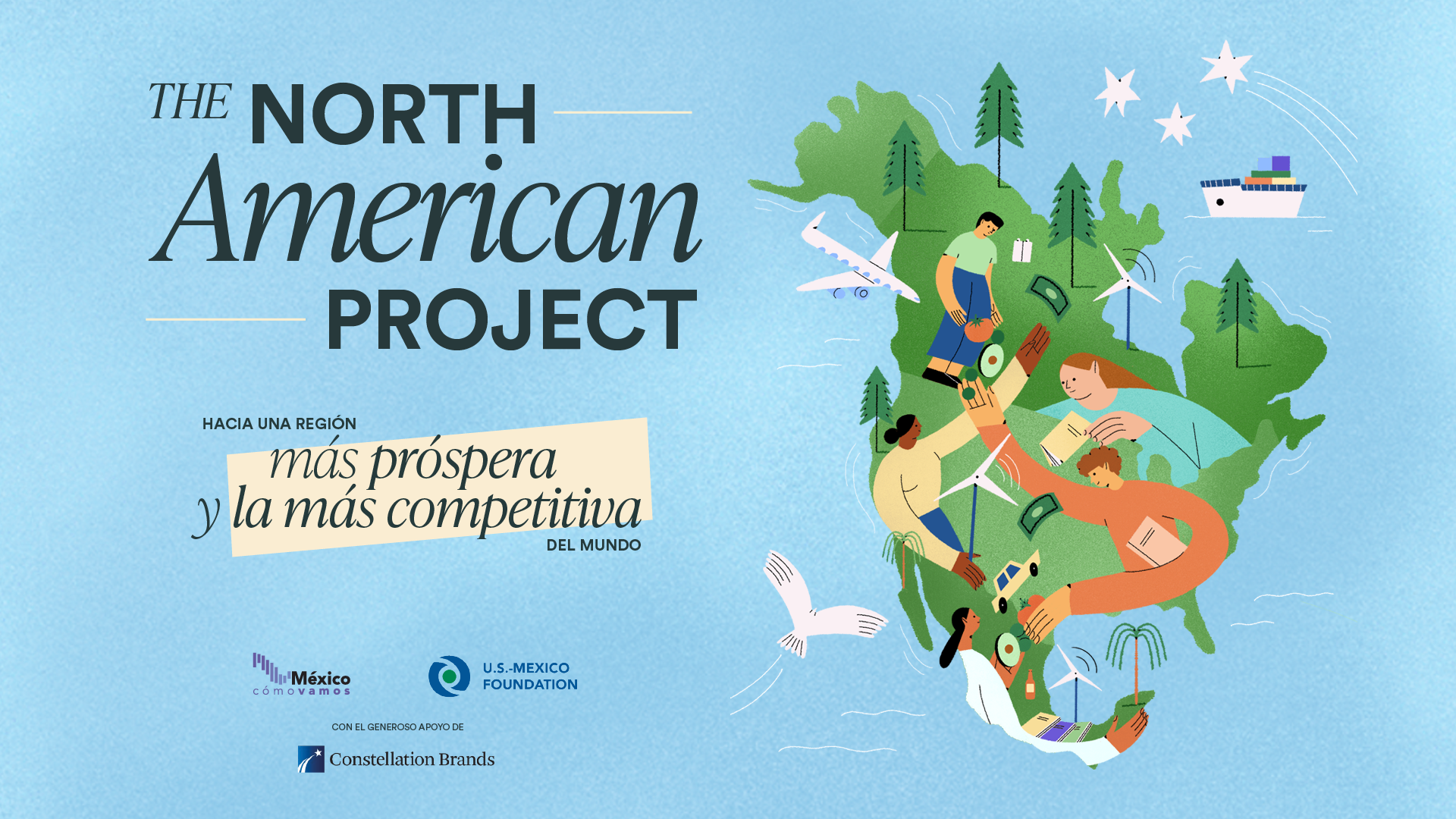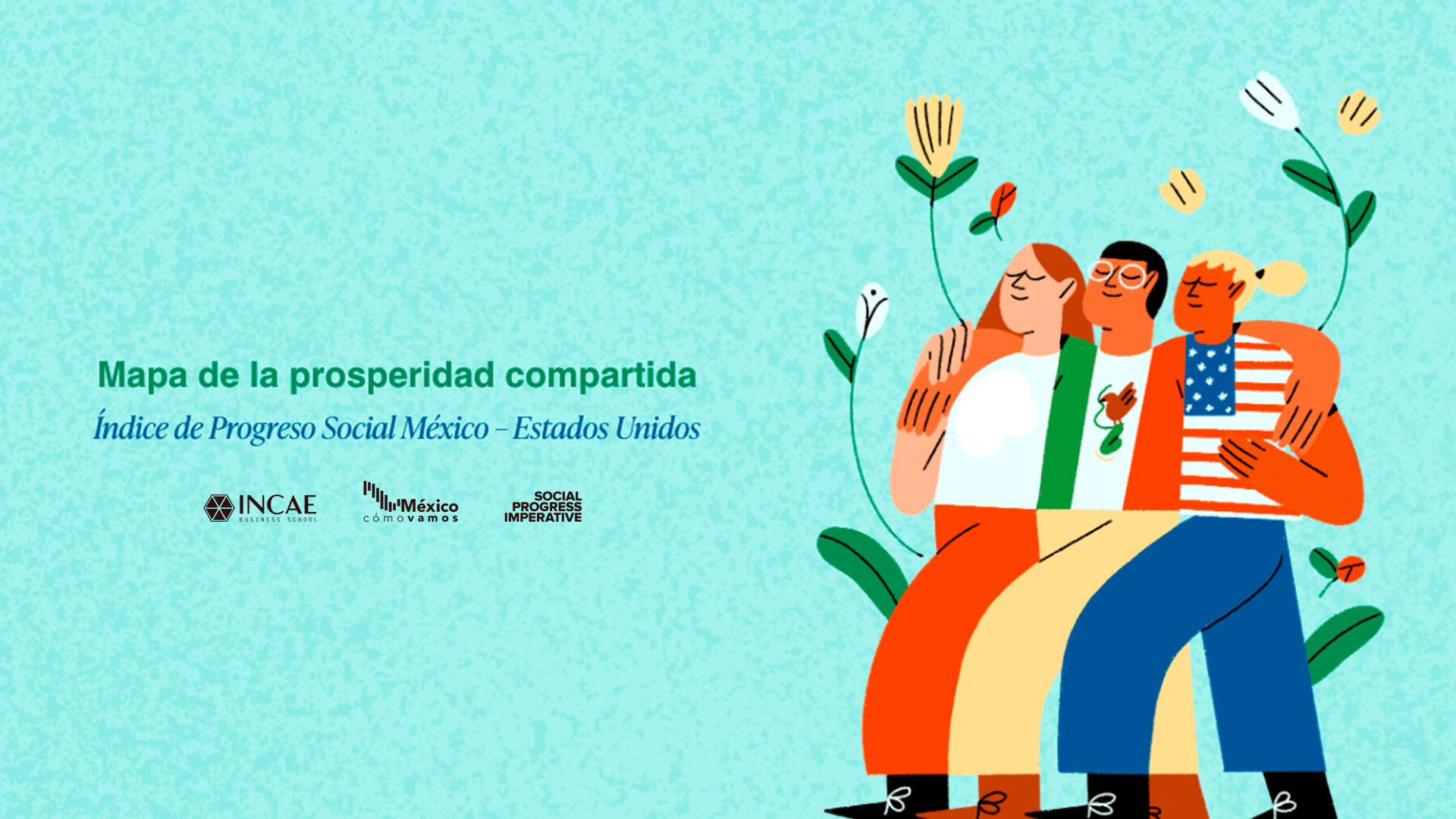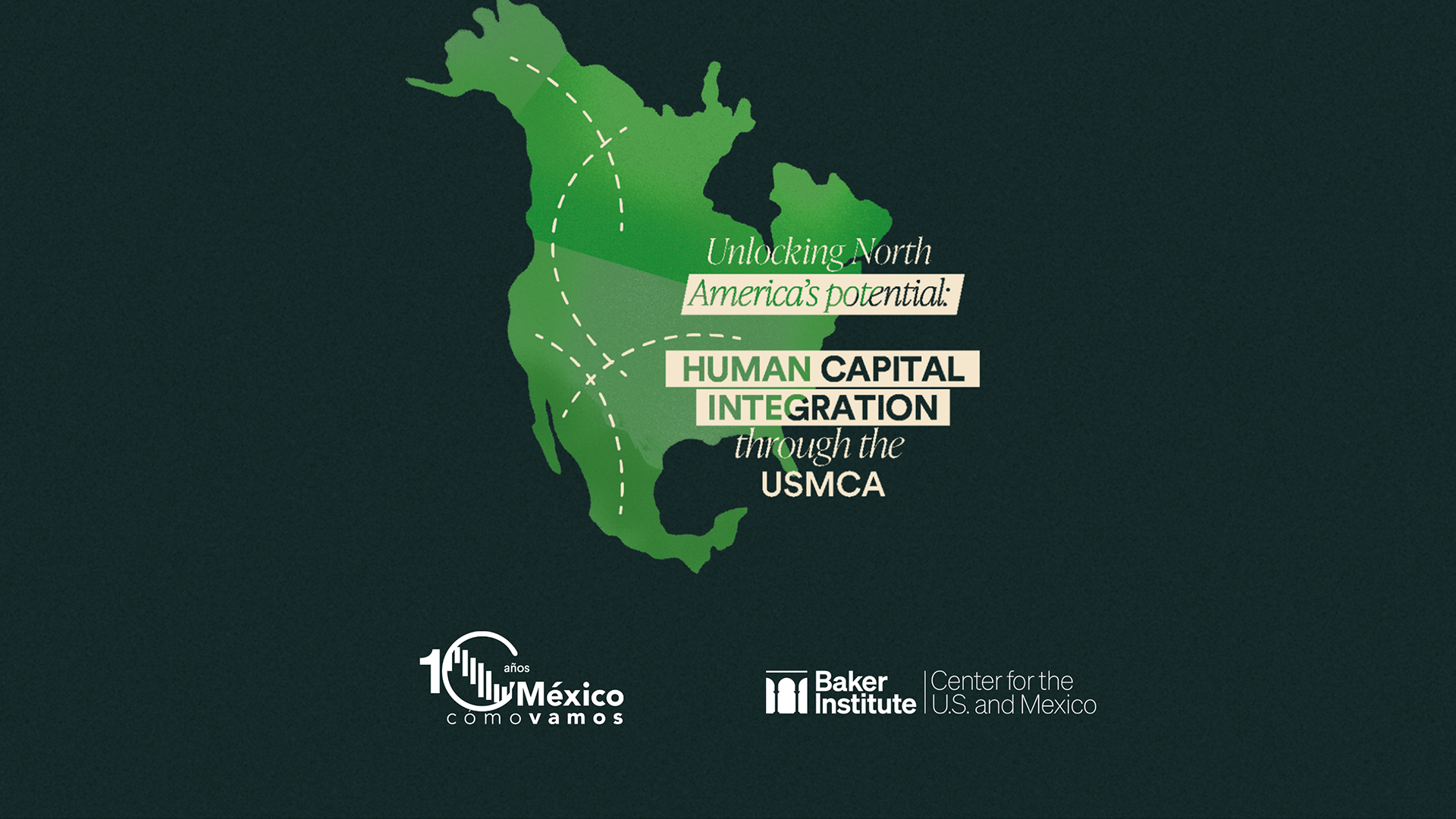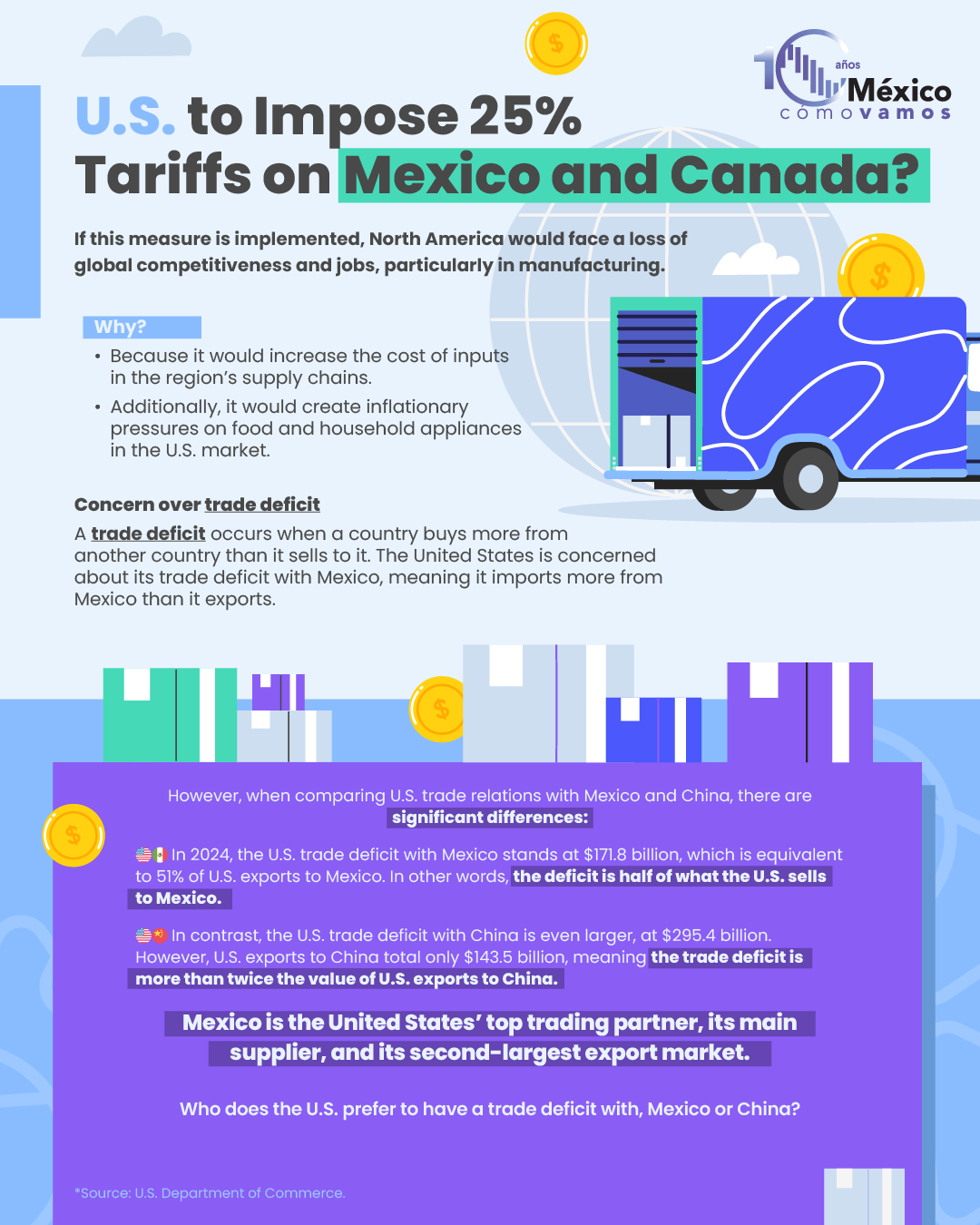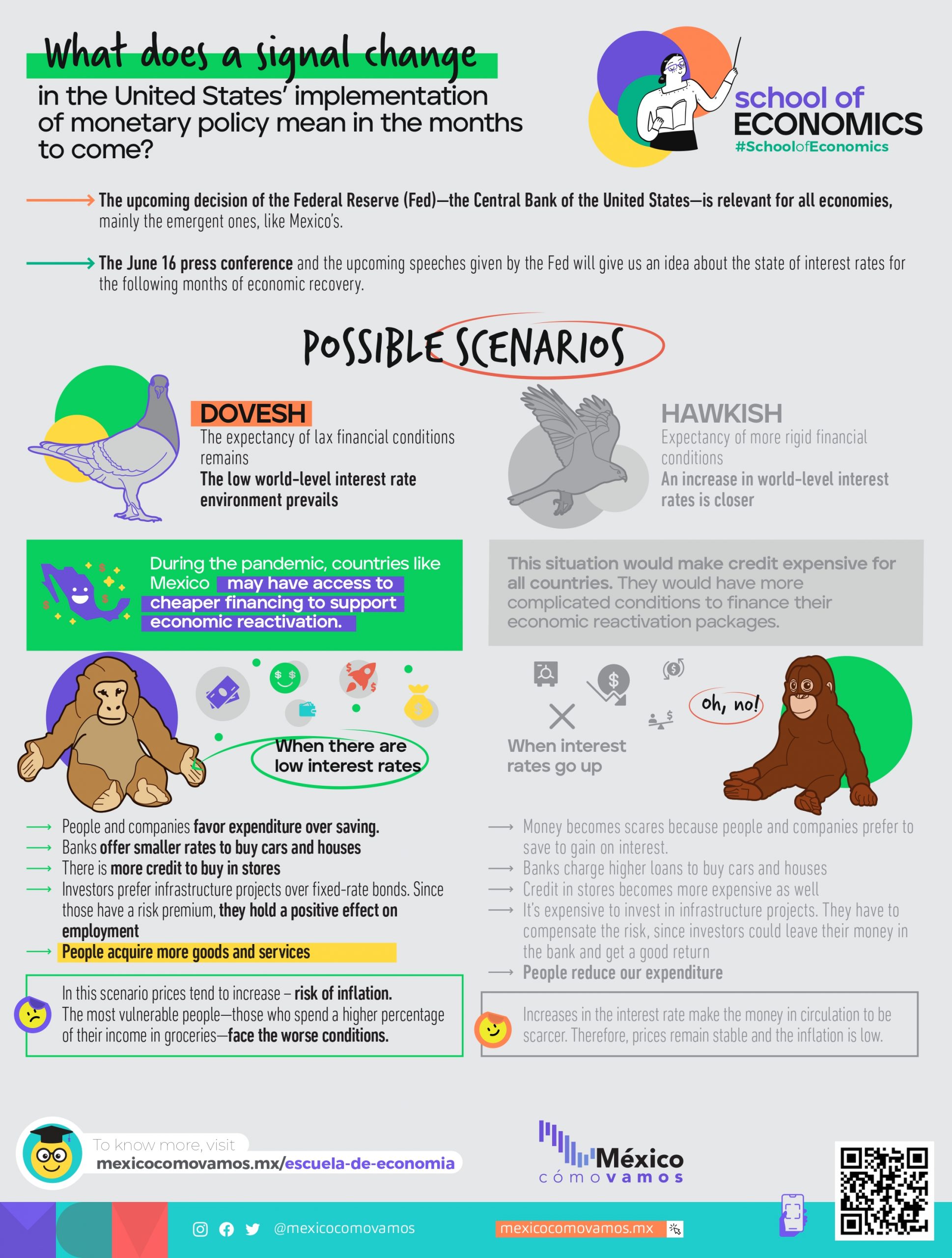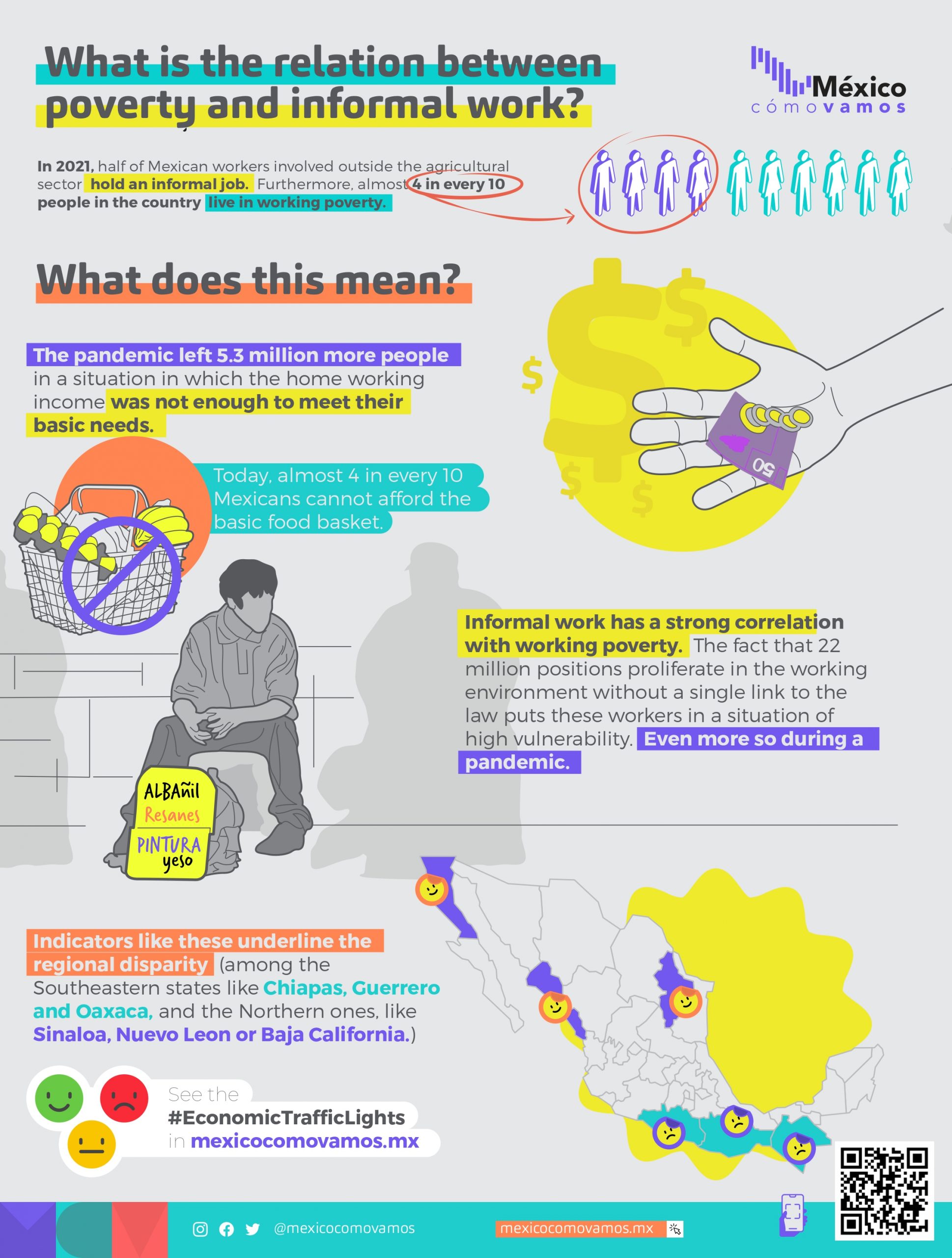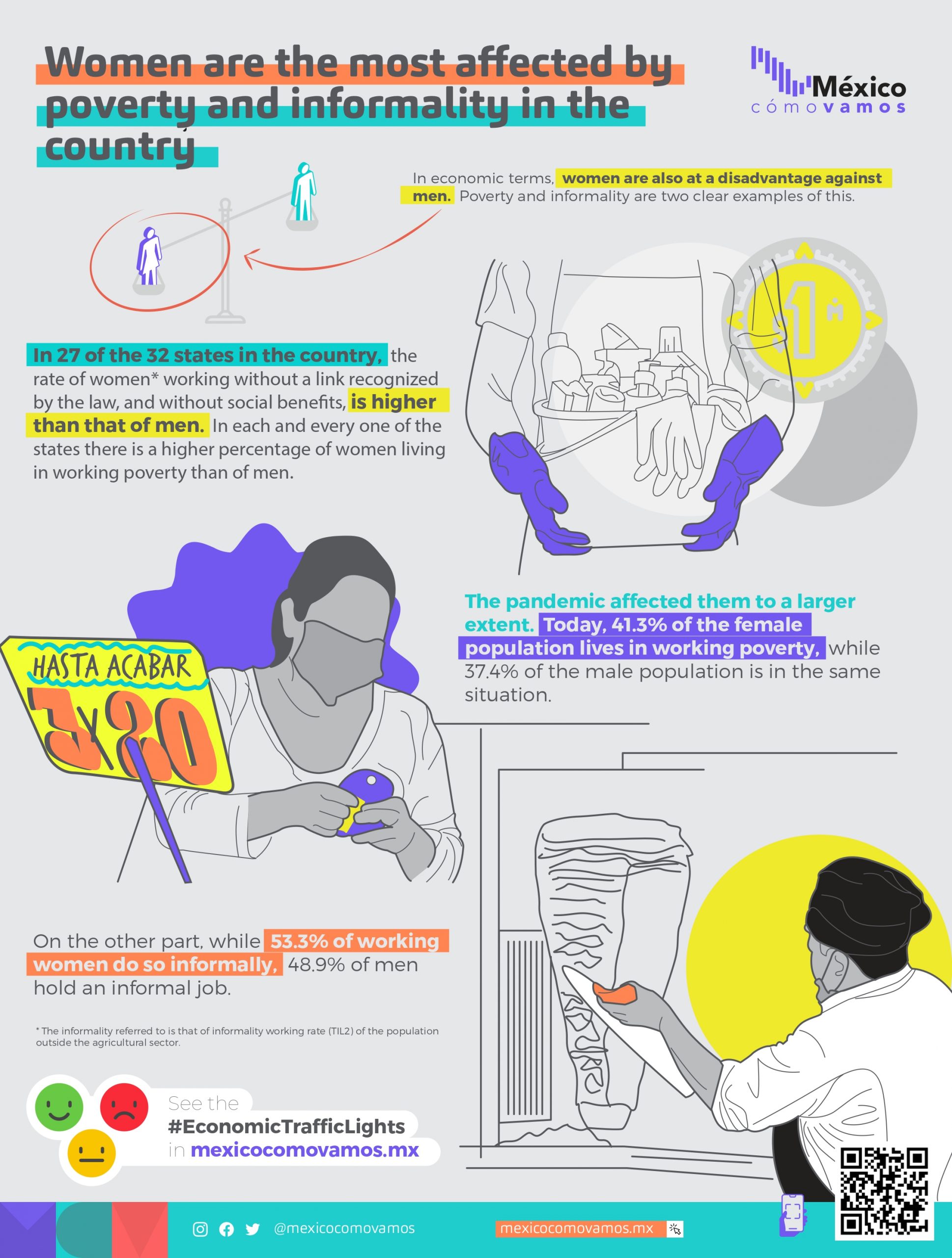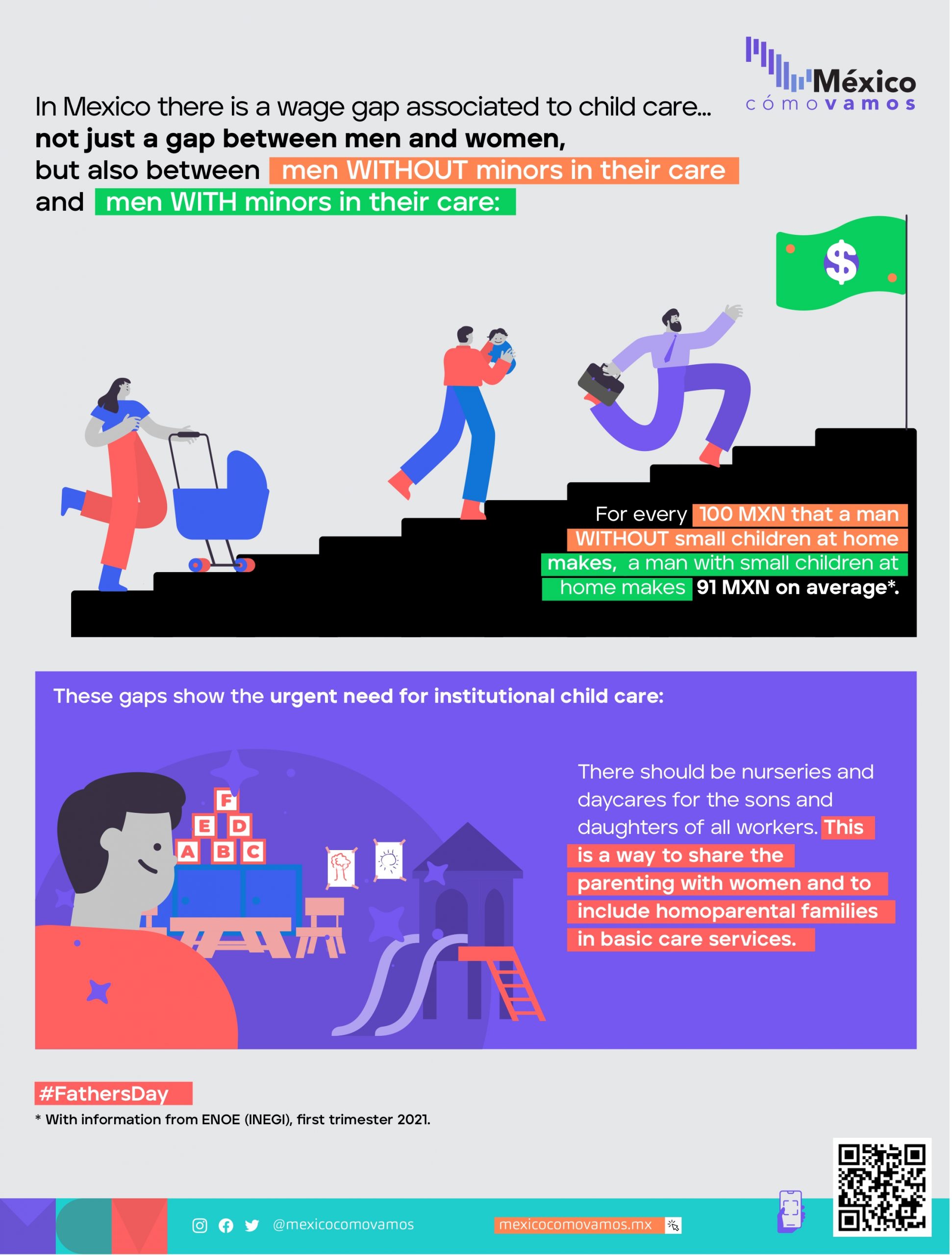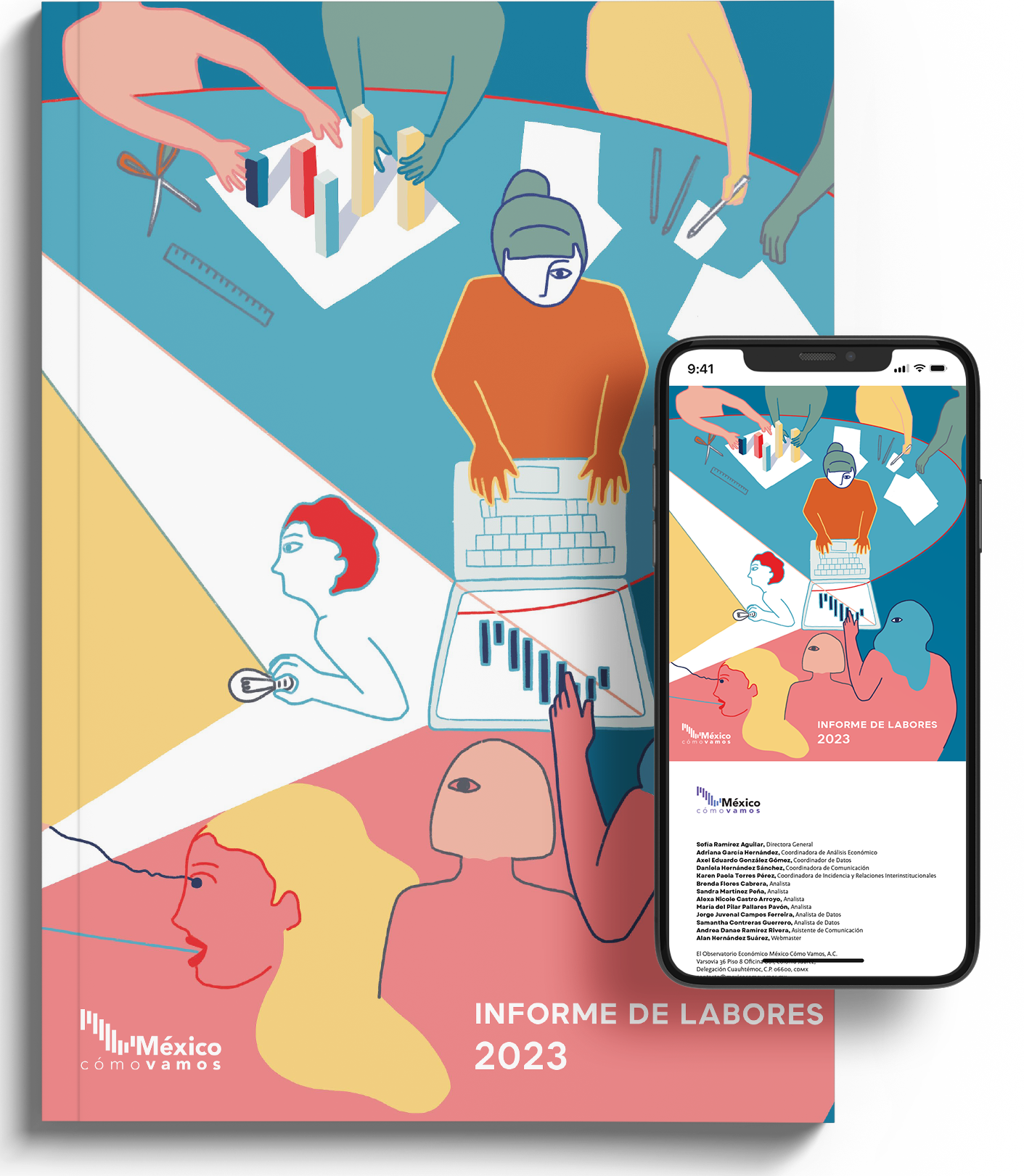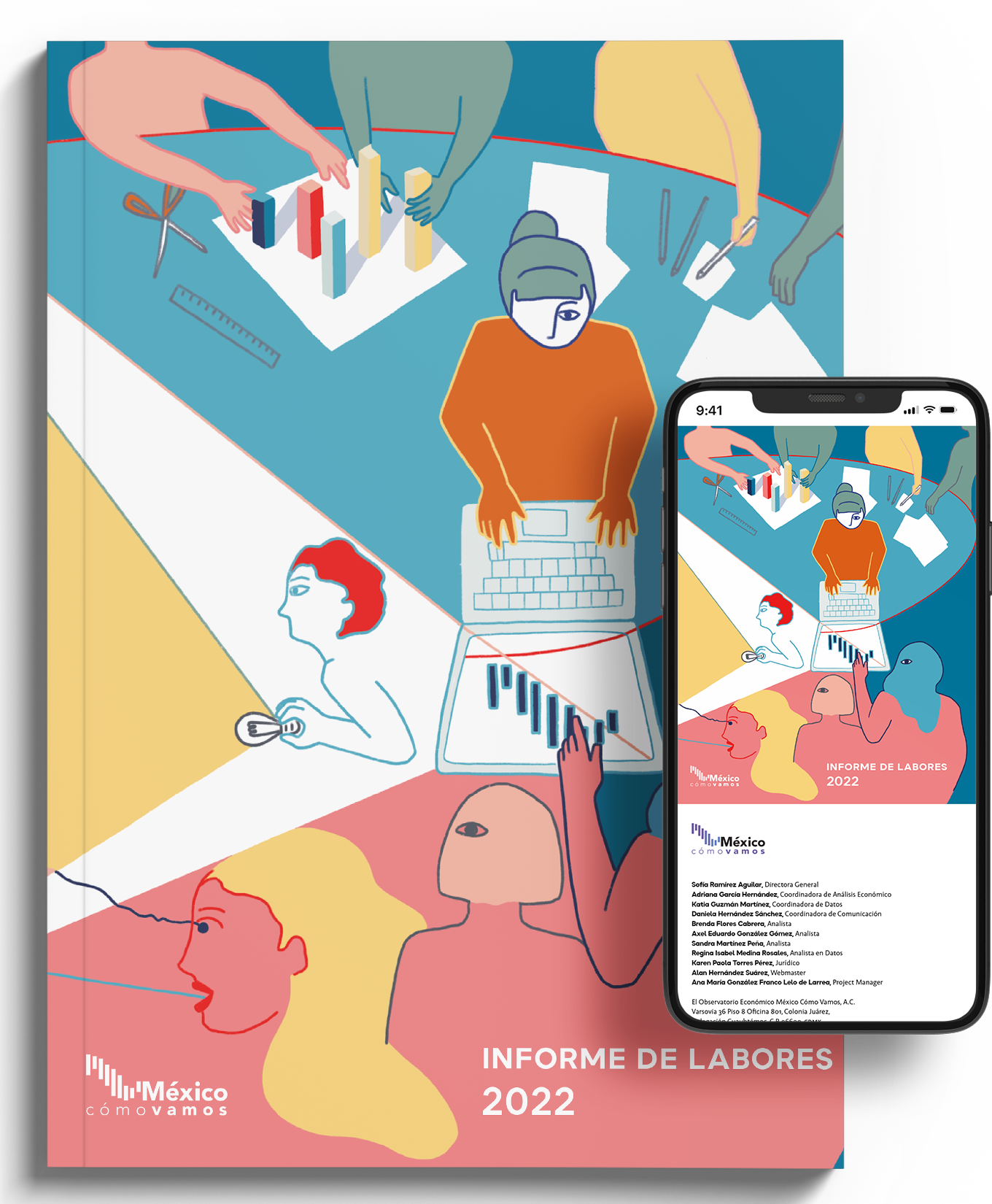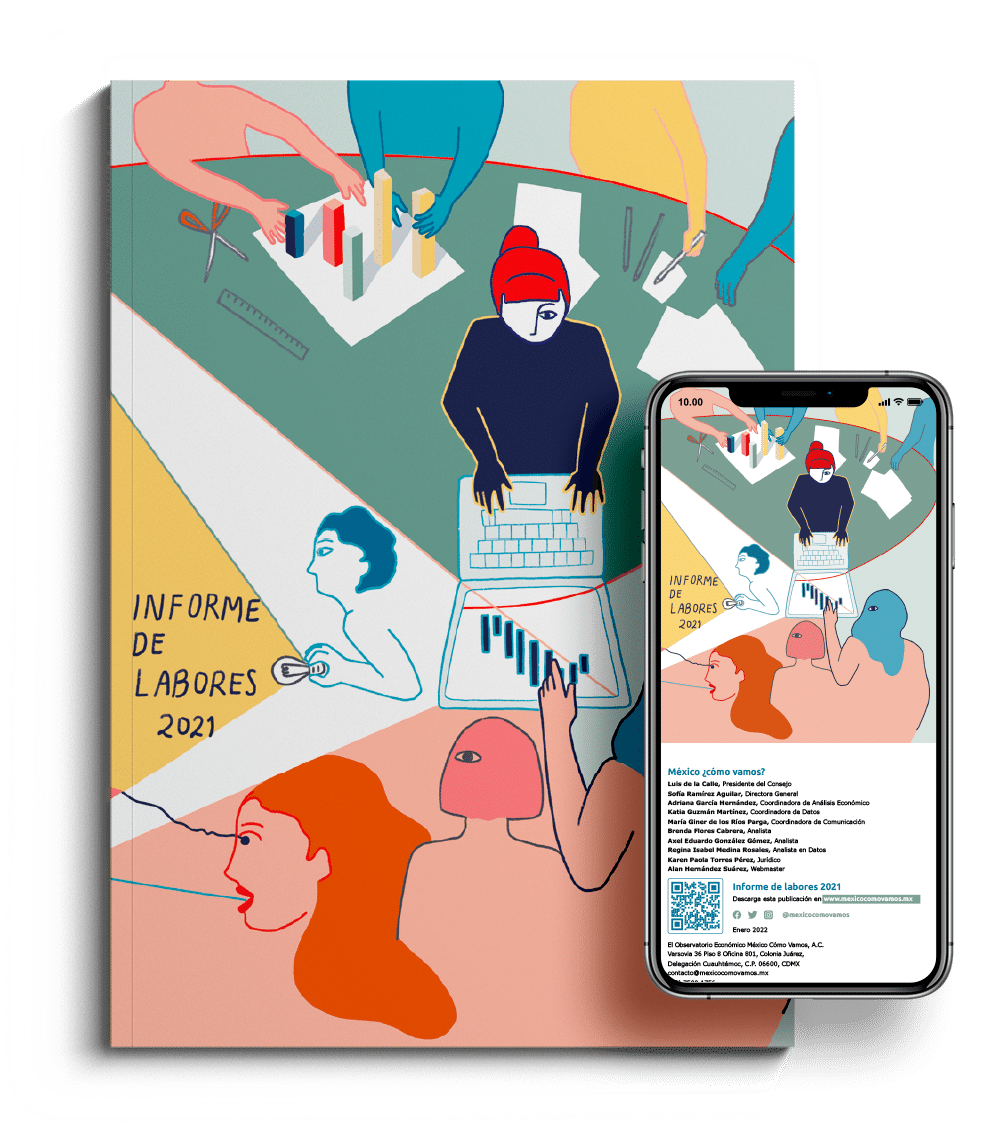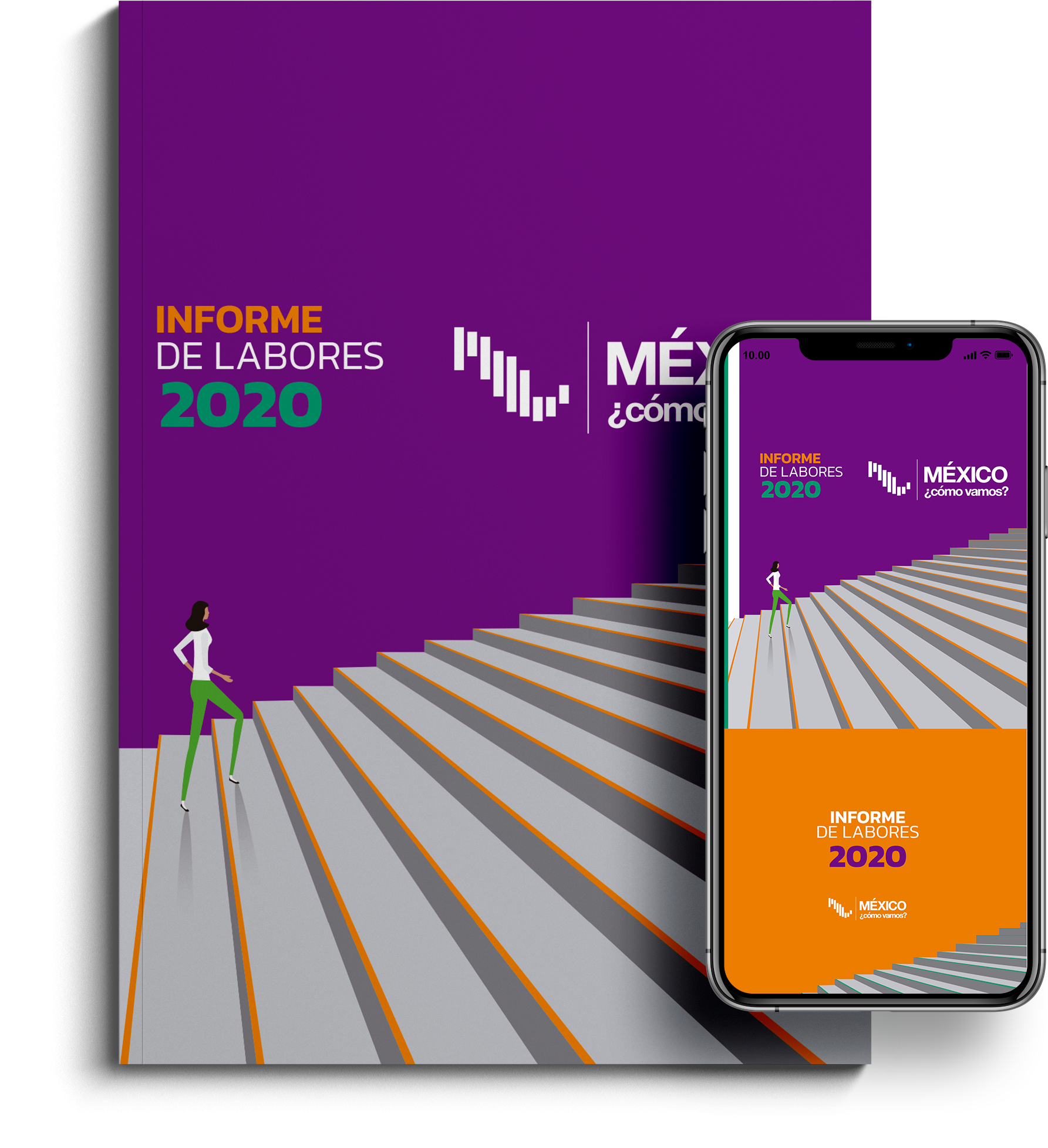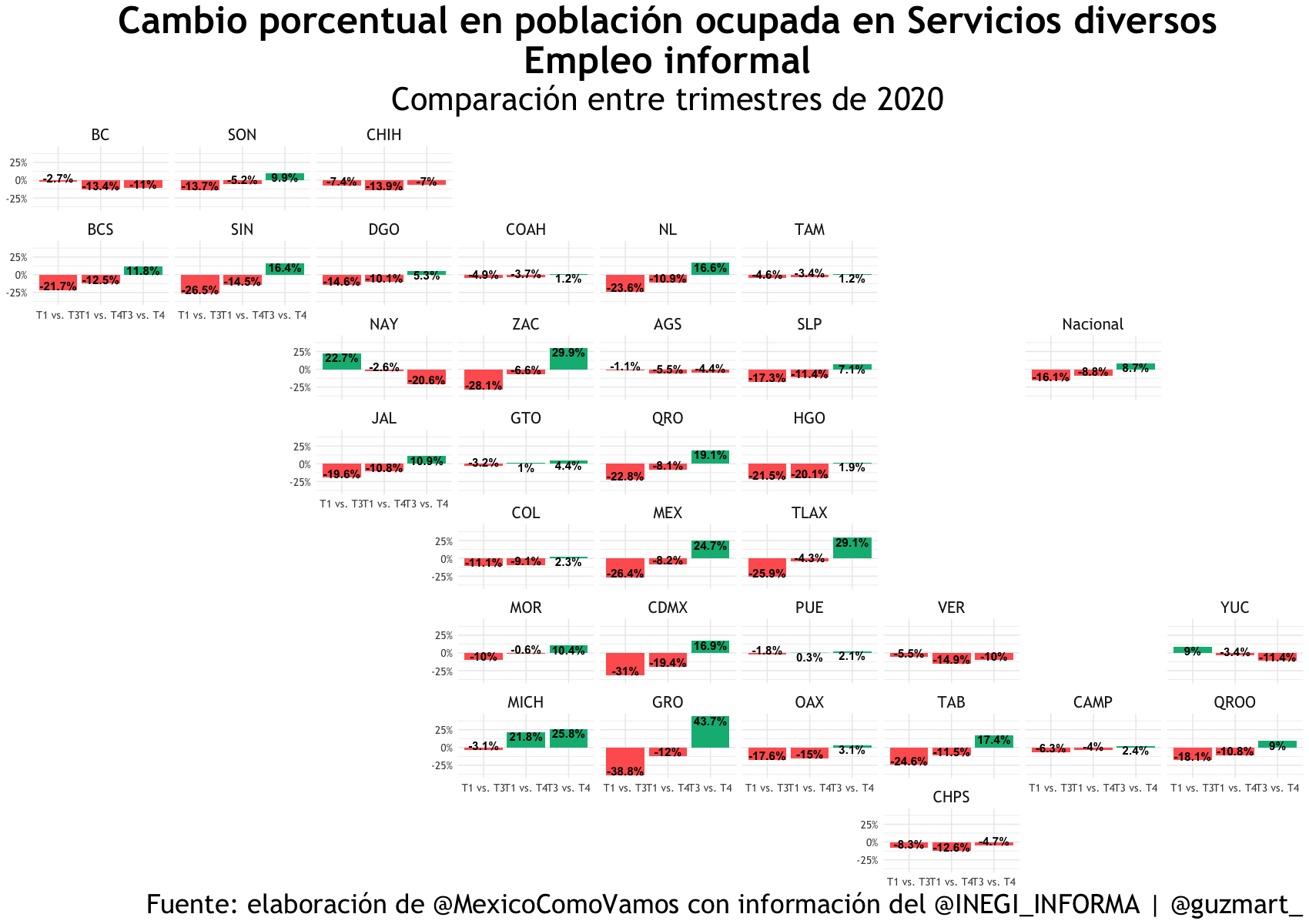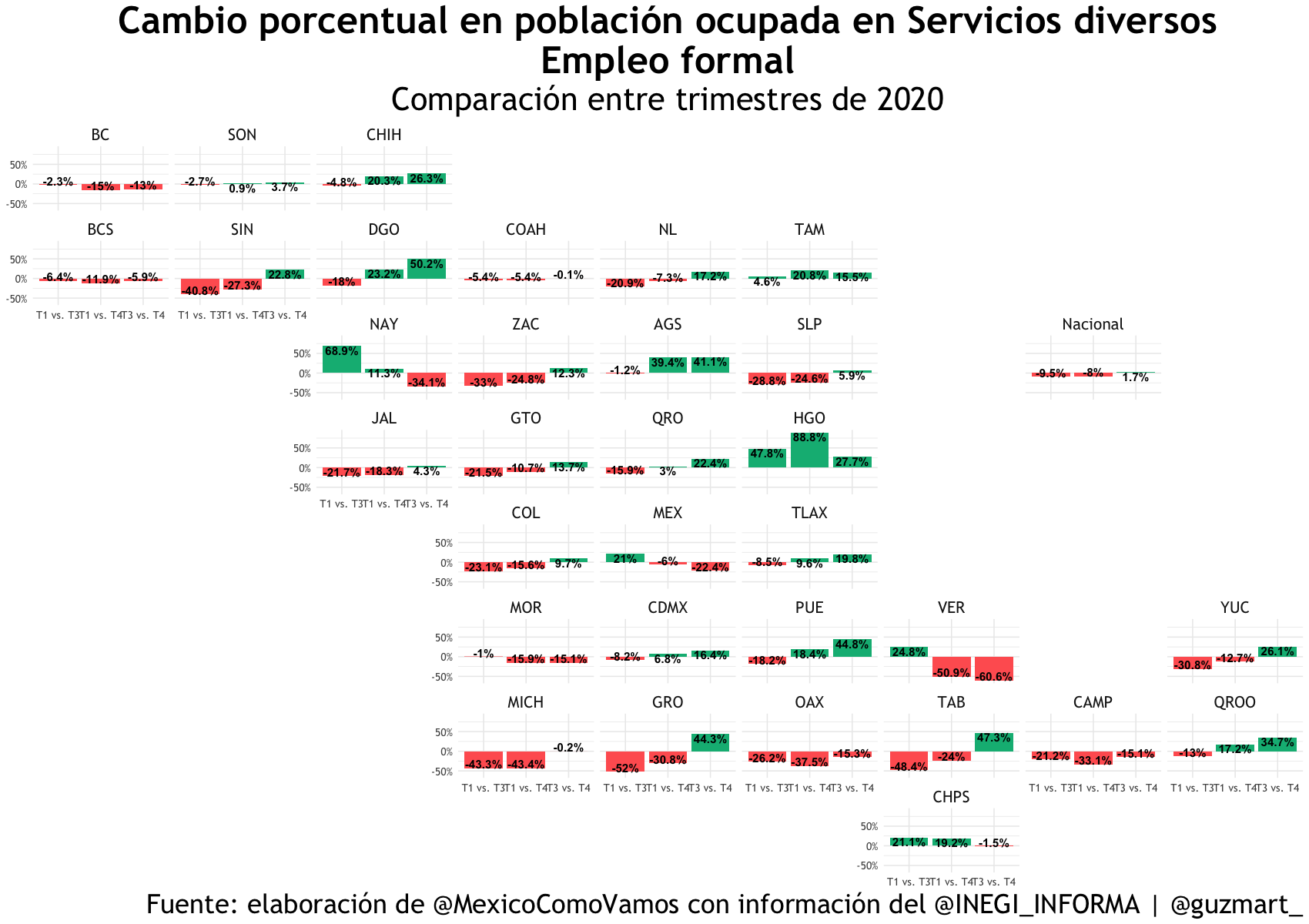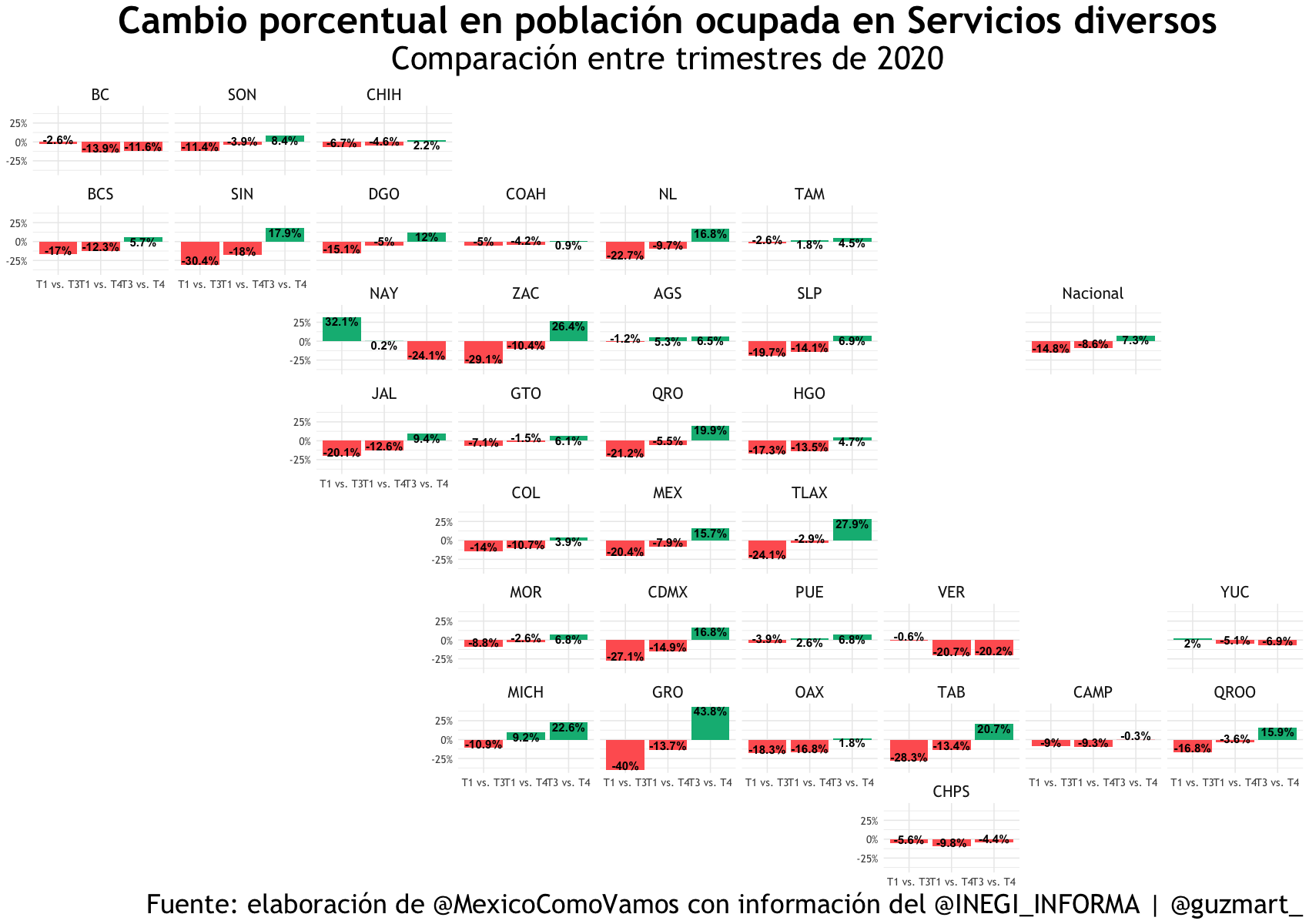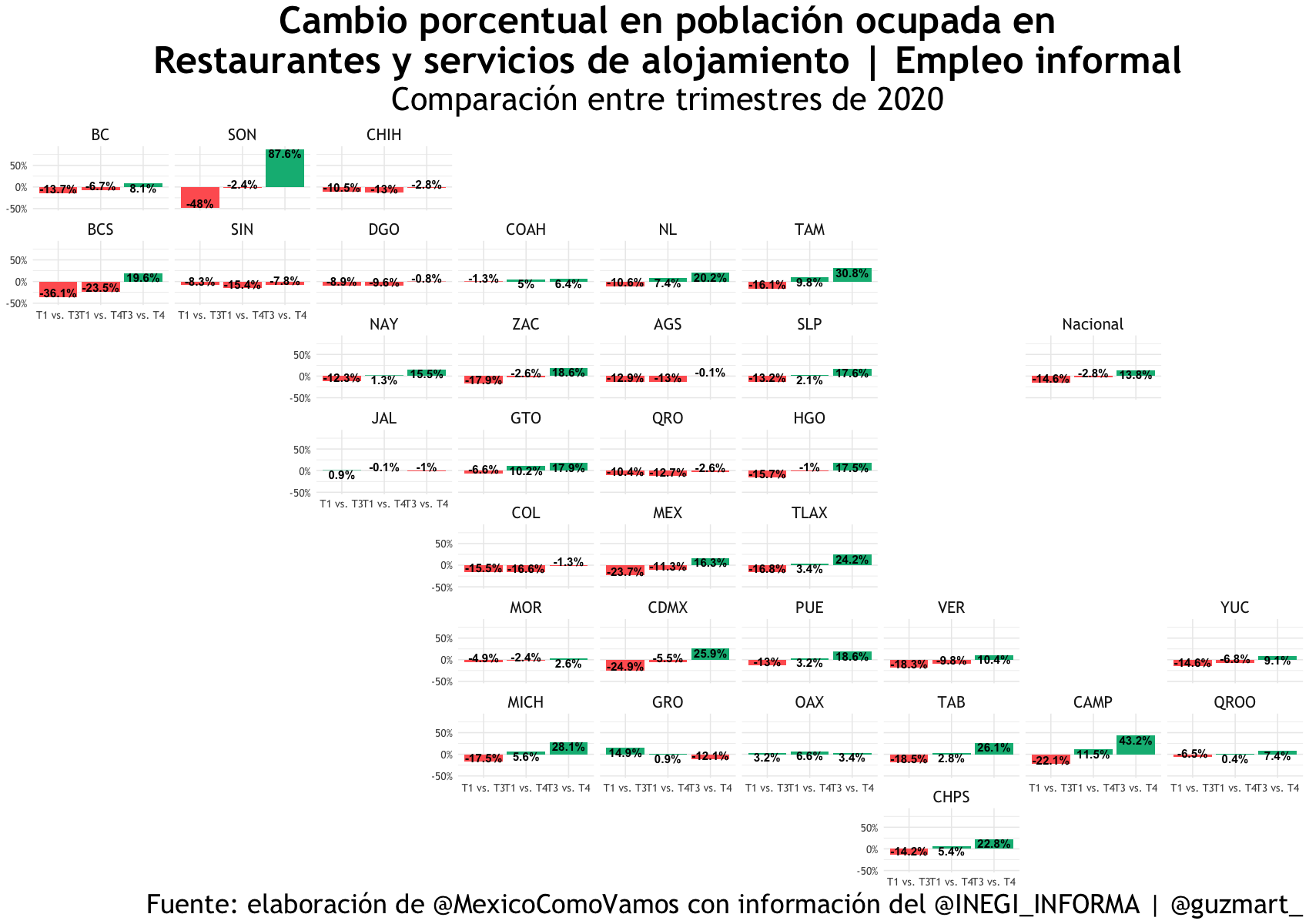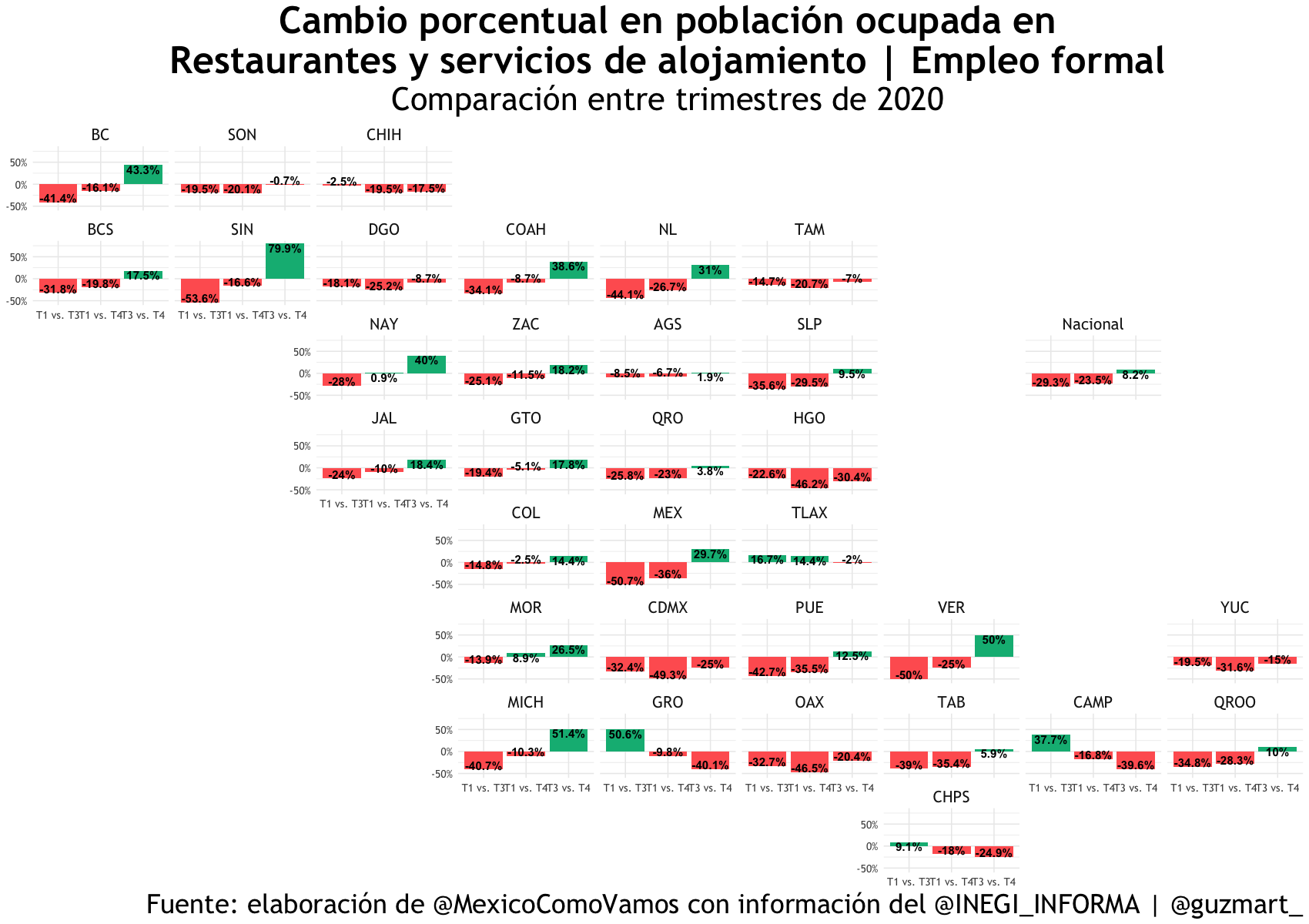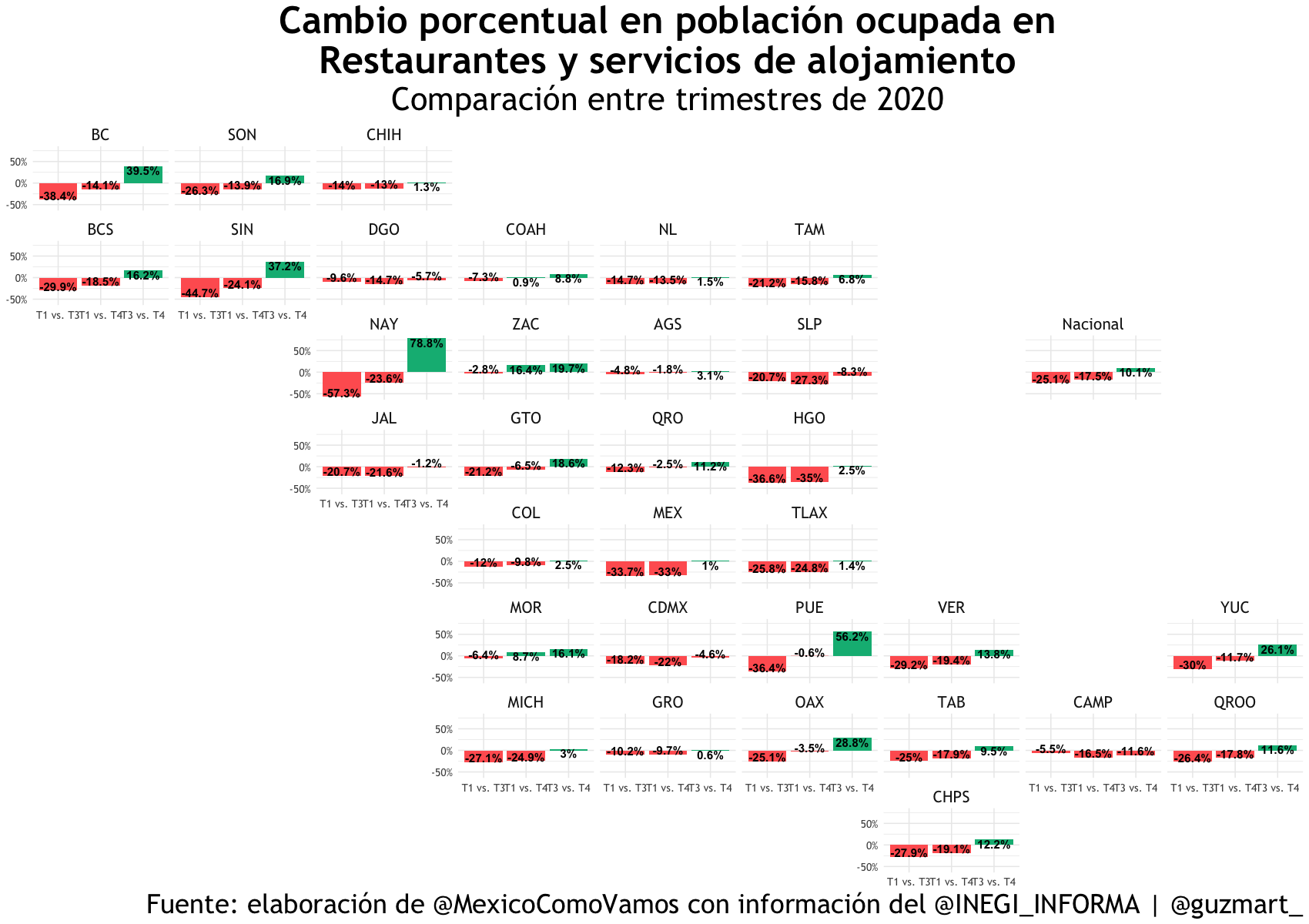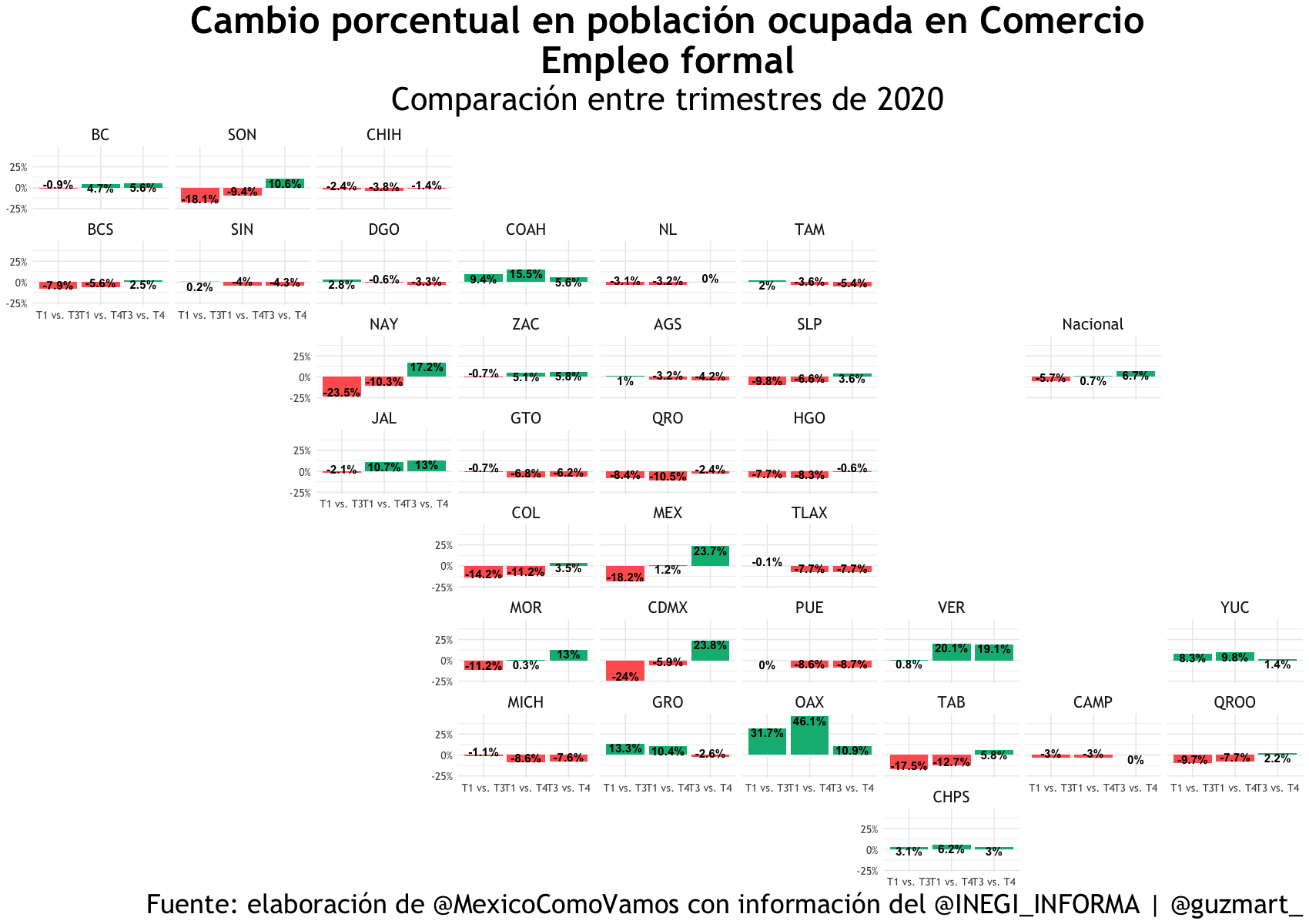We are the team of México, ¿cómo vamos?
We are a growing collective of social scientists, mainly Economists, who formed a nonprofit organization in 2014.
Our ultimate goal is to boost a sustained economic growth in order to generate more and better jobs. We want a country that can do more development and well-being to all people. We want to help diminish wage gaps. We want a sustainable economy that is also attractive for investment.
To achieve that, we will evaluate the behavior of economic variables (and soon of public finance as well) at a national and local level, and translate their causes and consequences into clear messages for all
citizens, reporters, governments, and other economic agents and decision-makers.
We serve as a bridge between academic research and public debate.
We seek to contribute to public agenda. For that, we develop and share investigations, analyses and press releases about events and public policies affecting social and economic development in the country.
We trust that what matters is to keep going forward; to know how we’re doing and what can be improved, not just where we are.

SOFÍA RAMIREZ
Managing Director

ADRIANA GARCÍA
Economic Analysis Coordinator

AXEL GONZÁLEZ
Data Coordinator

DANIELA HERNÁNDEZ
Media and Inter-Institutional Relations Manager

BRENDA FLORES
Analyst

SANDRA MARTÍNEZ
Analyst

JUVENAL CAMPOS
Analyst

SAMANTHA CONTRERAS
Analyst

ALEXA CASTRO
Analyst

ANDREA RAMÍREZ
Content manager

KAREN TORRES
Advocacy and Institutional Development Coordinator

KAREN ARELLANO
Associate Legal Advisor in Incidence Coordination and Institutional Development

ALAN HERNÁNDEZ
Fullstack
MISION & VISION
MISION
Offer essential economic information to understand where we are and where we are going, as well as explain economic phenomena in a didactic way to reach a greater number of people, and based on this, make proposals to influence and trigger sustainable and sustained economic growth in Mexico.
VISION
To be a national and state benchmark on sustainable and balanced economic growth, as well as development and social progress.
PURPOSE
Curate, interpret and create economic information to bring it closer to people, companies, organizations, and governments to support day-to-day decision-making, accurately and with less risk.
MEXICO’S SOCIAL PROGRESS INDEX
2024
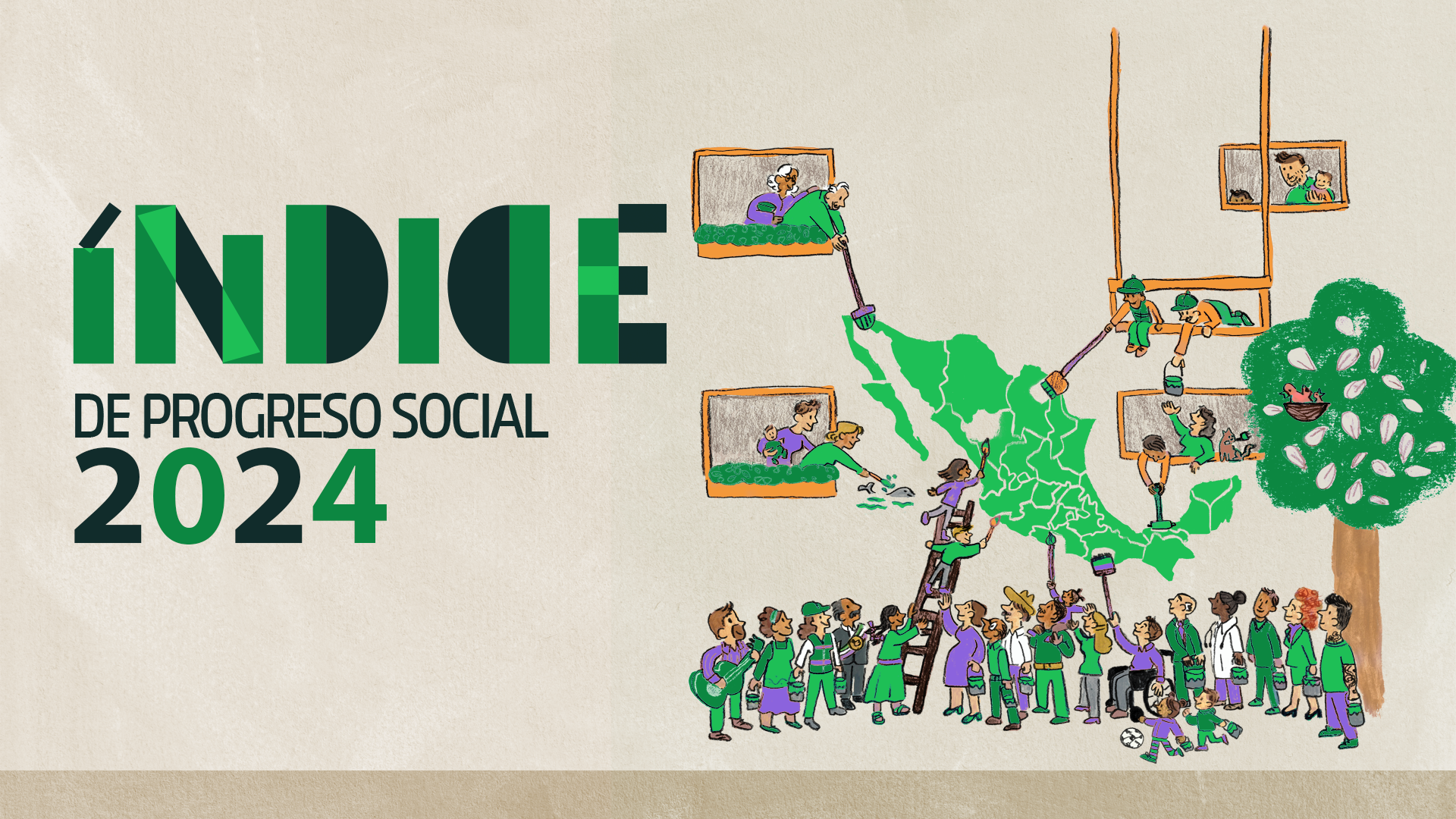
Social Progress Index (SPI) 2024: Data-Driven Stories 2015-2023 for each of Mexico’s states revealed compelling results, here are some of the key findings:
- Mexican families subsidize the state’s role in providing services that enable access to fundamental rights, such as health and education, since they are largely financed through household incomes rather than being adequately provided by the government. In the context of rising labor income, a slight increase in women’s participation in the paid labor market, and a gradual recovery of formal employment following the pandemic, the SPI reached its historical peak in 2023, partly driven by out-of-pocket household spending.
- Economic growth is a necessary but not sufficient condition to improve social progress.
- The expansion of production capacities and supply chain integration known as nearshoring, favors states with high levels of social progress.
- Education, health, and safety are key drivers of social progress.
- The Southeast lags significantly in social progress.
- Resilience is stronger in states with higher levels of social progress.
CHECK OUT OUR LASTEST PUBLICATIONS!

What challenges does Claudia Sheinbaum face
as she takes over the presidency of Mexico?

What challenges does Mexico face with the new U.S. Administration?

The growth of Mexico is closely tied to its trade openness

Trump 2.0 calls for a strategic response from Mexico on security, migration, and trade
THE NORTH AMERICAN PROJECT
CHECK OUT OUR SITES!
MEXICO, HOW WE ARE GOING
IN RETIREMENT SAVINGS?
The document presents a Diagnosis of Retirement Savings in Mexico and estimates the potential market of people who can save for retirement in Mexico. An analysis is made of the Mexican savings ecosystem with purpose of solving questions such as who saves in Mexico? who can save in Mexico? and who could save more in Mexico?
The reforms to the Mandatory Savings System have improved the retirement prospects of formal workers if, in addition, we incorporate public policy recommendations, access to workers’ pensions could be improved and replacement rates increased to desired levels (between 70 and 85% Vanguard, 2019)
All proposed government actions are useful. However, one of the main recommendations is voluntary retirement savings plans with automatic enrollment and termination. These types of plans have proven to be successful in other jurisdictions, as they enhance voluntary savings by eliminating friction in the accumulation of retirement savings.
PUBLICATIONS
Trade integration with the world has allowed Mexico to experience sustained development over the past 40 years. The United States-Mexico-Canada Agreement (USMCA) plays a fundamental role in this integration, so Mexico must maintain a strategy that benefits Mexicans, especially their quality of life..
Andrés Manuel López Obrador’s presidency began with a commitment to a government change that would curb corruption in the public sphere and, above all, prioritize the Mexican people in social development policies. These changes would be accompanied by a revival of the national oil industry, with the state playing a predominant role in the energy sector, aiming to achieve energy sovereignty.
While the shift in economic policy started with the cancellation of Mexico City’s new airport in Texcoco, Mexico in December 2018, the new administration had only 2019 to implement its economic agenda before the COVID-19 pandemic struck.
The labor market is a fundamental pillar in people’s lives. It enables individuals to acquire income necessary for meeting basic needs, accessing essential services such as education and healthcare, and enhancing the overall quality of life for workers and their families. Consequently, Mexico’s Secretariat of Labor and Social Security (Secretaría del Trabajo y Previsión Social or STPS) assumes a critical role in the country’s development and the well-being of Mexicans.
Recently, Marath Baruch Bolaños López was appointed as the new head of the STPS, replacing Luisa María Alcalde, who now serves as Secretary of the Interior. Given these changes and the significance of the department, the Economic Observatory México, ¿cómo vamos? presents a minimum agenda outlining the key pending issues in labor matters in Mexico. This agenda focuses on recognising two major labor market challenges: high levels of informality and low female labor force participation.
For the fourth consecutive year, the Economic Observatory, México, ¿cómo vamos? presents the Social Progress Index (IPS) for the 32 federal entities in Mexico, this time with revised figures from 2015 to 2021. This Index reviews the progress in the well-being and living standards of people in each of the states, which is why the IPS is not a snapshot of the last year, but a movie that tells stories of social progress and stagnation over seven years, comparing not only progress between states but also making a contrast exercise within the federal entity over time
Women work longer hours in unpaid activities
- Women spend 42 hours per week working on housework and care tasks, while men only 19 hours.
- If we divide the 42 hours by 5 days, we obtain that during the week women dedicate 8.4 hours a day to household and care work during the week. More than a full workday!
- The total value of unpaid work in households as a percentage of GDP is 24.7%, of which women contribute 18% of GDP, and men only 6.7%.
In June 2023, annual general inflation in Mexico reached 5.06%, the lowest since March 2021, while core inflation decreased to 6.89%. Although food prices remain high, they exhibited a slowdown with an annual variation of 7.34%.
Investment grew by 3.0% during the fourth quarter of 2022, but as a percentage of GDP, it decreased from 21.4% to 21.1% compared to the third quarter of the year. Gross fixed capital formation (investment) was at a similar level to pre-pandemic, but it is lagging behind by 8.3% compared to its highest level observed in 3Q2015.
During the first quarter of 2023, 423,384 jobs were added to the IMSS registry, a figure consistent with the goal of creating the equivalent of 100,000 jobs per month. The Economic Traffic Light for formal job creation is in green.
In 3Q22, Mexico’s GDP increased 0.9% q/q, 4.3% y/y. Out of the six most important sectors of the economy, only construction is still lagging.
GFI in Mexico increased 0.1% in 3Q22, passing from 20.8% in previous quarter to 21.4% of GDP. Nevertheless, gross fixed investment is still lagging: 1.7% vs. pre-pandemic levels and 11.2% from the maximum level observed back in 3Q15.
INMIGRATION IN MEXICO
The third installment of #MásAperturaMenosBarreras offers a series of concrete proposals in each of the subgroups of immigrants identified to adjust, create and/or update public migration policies.
- In terms of labor policy, it is suggested to update the Federal Labor Law (particularly article 7), create a visa for entrepreneurs, and expedite and increase the issuance of work permits.
- Some changes in economic policy include the generation of signs of Mexico as a country open to immigration and innovation; create a talent attraction strategy in the different states; and provide greater connectivity to the country.
- With regard to social policy, access to the country for refugee applicants should be facilitated; create a new narrative around immigration; make the issuance of documents efficient; and increase financing, training and tools for Mexican authorities and institutions.
- Finally, we must generate the necessary budgetary changes to provide tools to the institutions responsible for the issuance, regularization, attention, protection and registration of migratory flows in the country.
